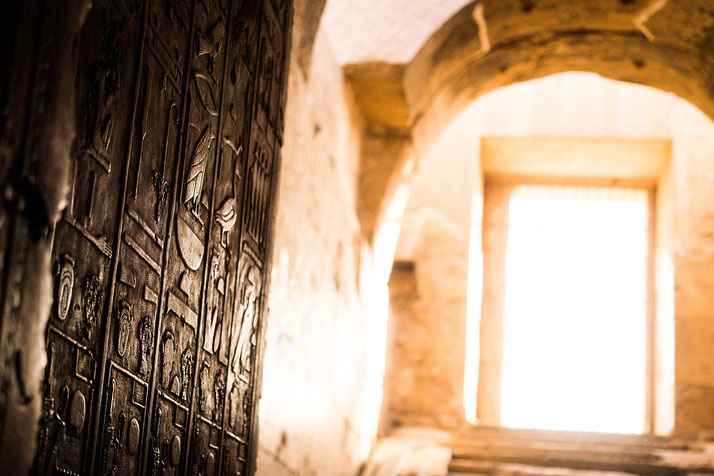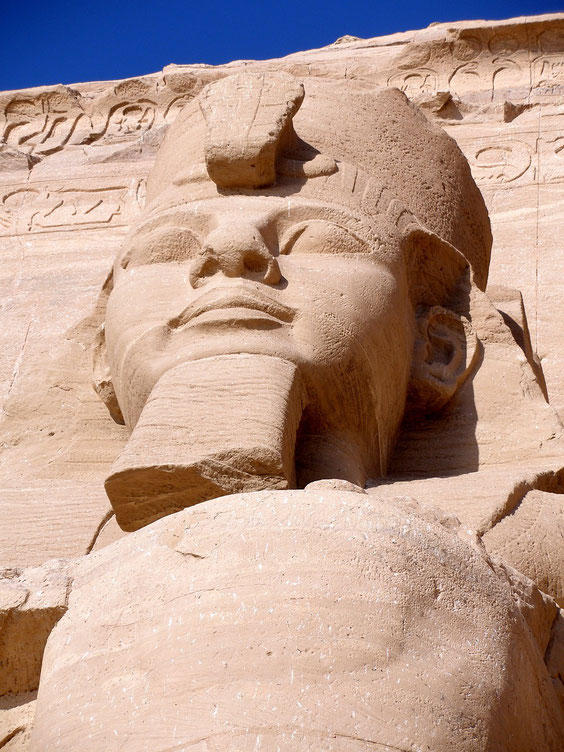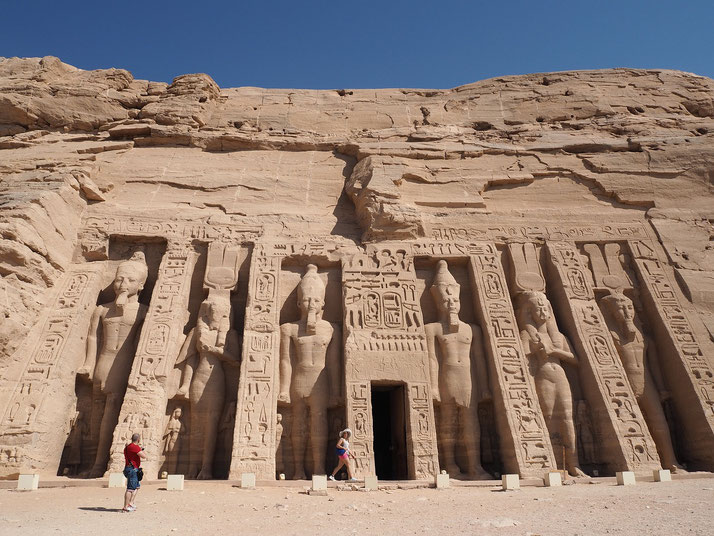Who was Nefertari, the most famous ancient Egyptian queen?

Nefertari, the Great Royal Wife of Ramesses II, holds a unique position in the annals of ancient Egyptian history. Her life and legacy provide a captivating glimpse into the complex social, political, and cultural fabric of the New Kingdom period.
As the principal wife of one of the most powerful and renowned pharaohs of Egypt, Nefertari played an essential role in cementing diplomatic ties and shaping the kingdom's artistic and religious landscape.
Who was the real Nefertari, and what role did she play in running the kingdom?
Also, what remarkable finds were discovered in the magnificent tomb dedicated to her?
Nefertari's world
Nefertari lived during the 19th Dynasty of the New Kingdom period (1292-1189 BCE), a time when ancient Egypt was at the height of its power and prosperity.
She was married to Ramesses II, one of the most celebrated and powerful pharaohs in Egyptian history, who ruled for an impressive 66 years from 1279 to 1213 BCE.
Although Nefertari's exact lineage remains uncertain, it is widely believed that she was of noble birth, possibly a member of the royal family or high-ranking nobility.
During the New Kingdom period, Egypt's political and cultural influence expanded significantly, and its art and architecture flourished.
It was under the reign of Ramesses II that colossal monuments like Abu Simbel and the Ramesseum were constructed, and the empire extended its borders, consolidating control over territories in Nubia, Canaan, and Syria.

Marriage to Ramesses II
Nefertari held the esteemed title of Great Royal Wife, making her the principal wife of Ramesses II.
In ancient Egyptian society, marriage was not only a personal union, but also played a crucial role in politics and diplomacy.
By marrying Nefertari, Ramesses II fortified his position as a pharaoh, ensuring her loyalty and support in ruling the kingdom.
It is important to note that Ramesses II had multiple wives, as was common for pharaohs; however, Nefertari was the most prominent among them.
Nefertari bore Ramesses II at least six children, including four sons (Amun-her-khepeshef, Pareherwenemef, Meryatum, and Meryre) and two daughters (Meritamen and Henuttawy).
These children held various important positions within the Egyptian court and priesthood, further solidifying the royal family's power and influence.
Throughout their marriage, Nefertari enjoyed a special status, as evidenced by the numerous representations of her in art and monuments.

The extent of her power and influence
As the Great Royal Wife of Ramesses II, Nefertari held significant responsibilities and influence within ancient Egyptian society.
Her roles encompassed both political and religious functions, which were closely intertwined in ancient Egypt. Some of her key responsibilities included:
She played an important role in Ramesses' own political propaganda, particularly in artwork.
Nefertari's image was prominently featured in various monuments, sculptures, and paintings throughout Egypt.
The depictions of her alongside Ramesses II not only demonstrated her status as his principal wife but also served to strengthen the pharaoh's position by emphasizing the stability and continuity of the royal family.
The temple of Hathor at Abu Simbel is a prime example of Nefertari's prominence in ancient Egyptian art and architecture.
Nefertari also played a key role in religious ceremonies and rituals, often depicted as offering gifts to the gods or participating in religious processions.
As a key figure in the royal court, her involvement in religious life helped to reinforce the divine nature of the pharaoh's rule and maintain the delicate balance between the earthly and spiritual realms.
Her importance in the political affairs of Egypt is clearly demonstrated in the surviving diplomatic correspondence.
As a highly educated and influential figure, Nefertari communicated regularly with other royal families in the region.
For instance, her correspondence with the Hittite queen Puduhepa is well-documented, showcasing her role in maintaining diplomatic relations and fostering peace between the two kingdoms.
Finally, as Ramesses II's Great Royal Wife, Nefertari provided crucial support to her husband in ruling the vast Egyptian empire.
This included advising the pharaoh on political matters, helping to maintain the royal household, and promoting the stability and well-being of the kingdom.
Her remarkable temple at Abu Simbel
Nefertari's temple at Abu Simbel is a remarkable monument built by Ramesses II in honor of his Great Royal Wife.
It is part of the larger Abu Simbel temple complex located in southern Egypt near the border with Sudan.
The complex consists of two massive rock-cut temples – the Great Temple dedicated to Ramesses II himself and the Small Temple, also known as the Temple of Hathor, dedicated to Nefertari.
The Temple of Hathor was built to venerate both Nefertari and the goddess Hathor, who was associated with motherhood, love, and joy, and it is an exceptional example of honoring a queen alongside a deity, emphasizing Nefertari's prominence and importance during her lifetime.

The facade of Nefertari's temple features six colossal statues – four representing Ramesses II and two portraying Nefertari. Each statue stands about 33 feet (10 meters) tall.
It is worth noting that the statues of Nefertari are the same size as those of Ramesses II, which is unusual in ancient Egyptian art and highlights the special status of Nefertari.
The interior of the temple consists of a main hall and a sanctuary. The walls are adorned with beautifully carved reliefs and inscriptions that depict scenes of Nefertari and Ramesses II making offerings to the gods.
The sanctuary houses three statues, representing Hathor, Nefertari, and Ramesses II, further emphasizing the connection between the queen and the divine.
The construction of Nefertari's temple at Abu Simbel not only serves as a testament to Ramesses II's devotion to his Great Royal Wife but also provides insights into the roles and significance of women in ancient Egyptian society.
The discovery of her lavish tomb
Nefertari is believed to have passed away around 1250 BCE, although the exact cause and circumstances of her death remain unknown.
She was buried in a tomb, known as QV66, which is located in the Valley of the Queens near Thebes, which is now modern-day Luxor.
It is considered one of the most beautiful and well-preserved tombs in Egypt, offering invaluable insights into ancient Egyptian art, culture, and religious beliefs.
The tomb's elaborate decoration and grand scale reflect Nefertari's importance during her lifetime and the high regard in which she was held by Ramesses II.
The artwork within the tomb is considered some of the finest in ancient Egyptian history, showcasing the skill and creativity of the artists who worked during the reign of Ramesses II.

The walls of Nefertari's tomb are adorned with exquisite paintings depicting scenes from her life, religious texts, and various gods and goddesses.
Some of the most notable images include Nefertari offering gifts to the gods, her journey through the afterlife, and her ultimate union with the god Osiris.
The colors used in the paintings remain vibrant and well-preserved, providing a stunning visual experience for visitors.
The tomb was discovered in 1904 by Italian archaeologist Ernesto Schiaparelli. Upon its unearthing, it was found to be mostly undisturbed, allowing for a detailed examination of its contents and structure.
Due to the tomb's importance and fragile state, various conservation efforts have been implemented to ensure its preservation.
Today, access to the tomb is restricted, and climate control measures have been put in place to minimize damage from humidity and temperature fluctuations.
What do you need help with?
Download ready-to-use digital learning resources
Copyright © History Skills 2014-2025.
Contact via email
With the exception of links to external sites, some historical sources and extracts from specific publications, all content on this website is copyrighted by History Skills. This content may not be copied, republished or redistributed without written permission from the website creator. Please use the Contact page to obtain relevant permission.





